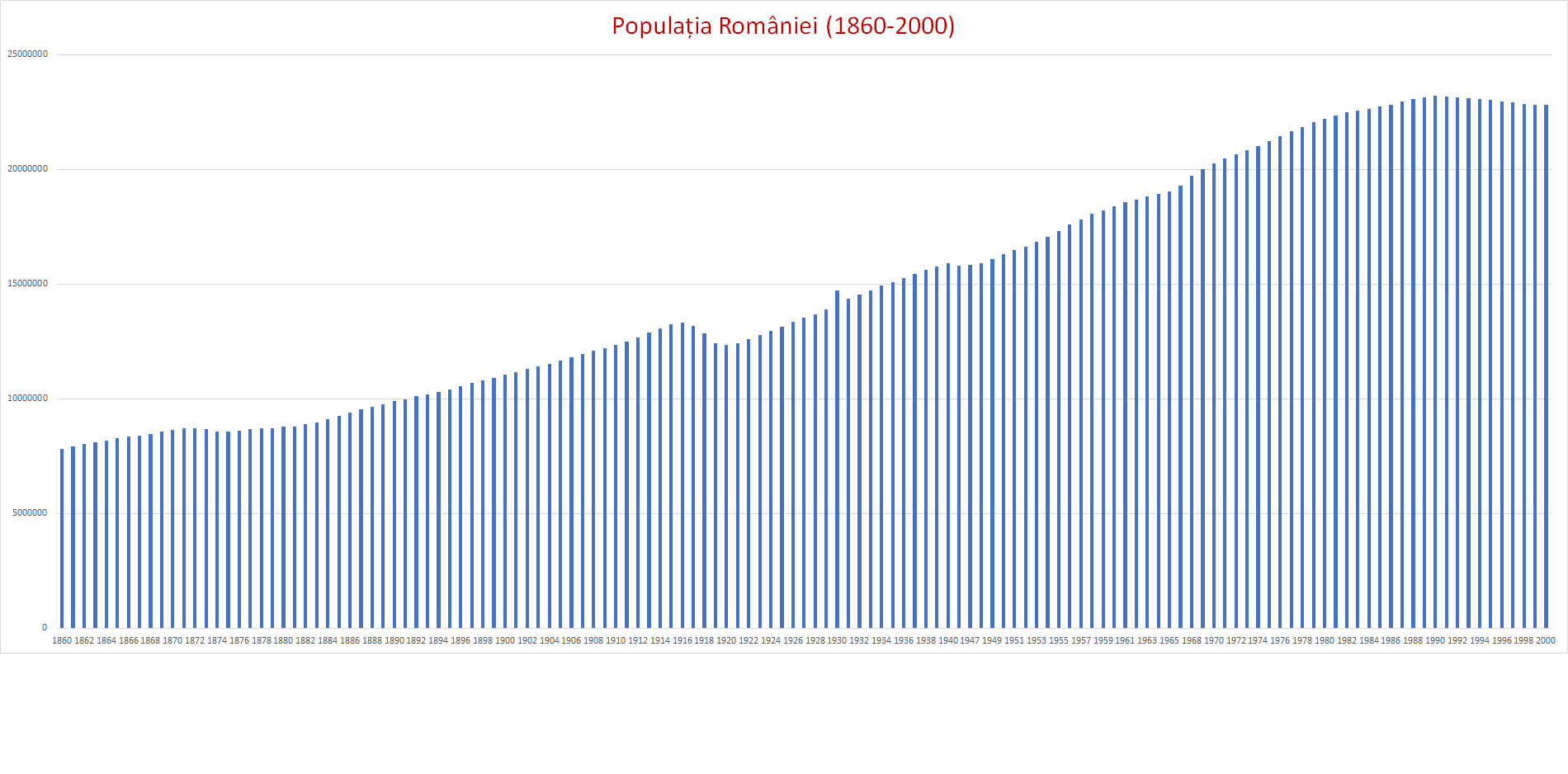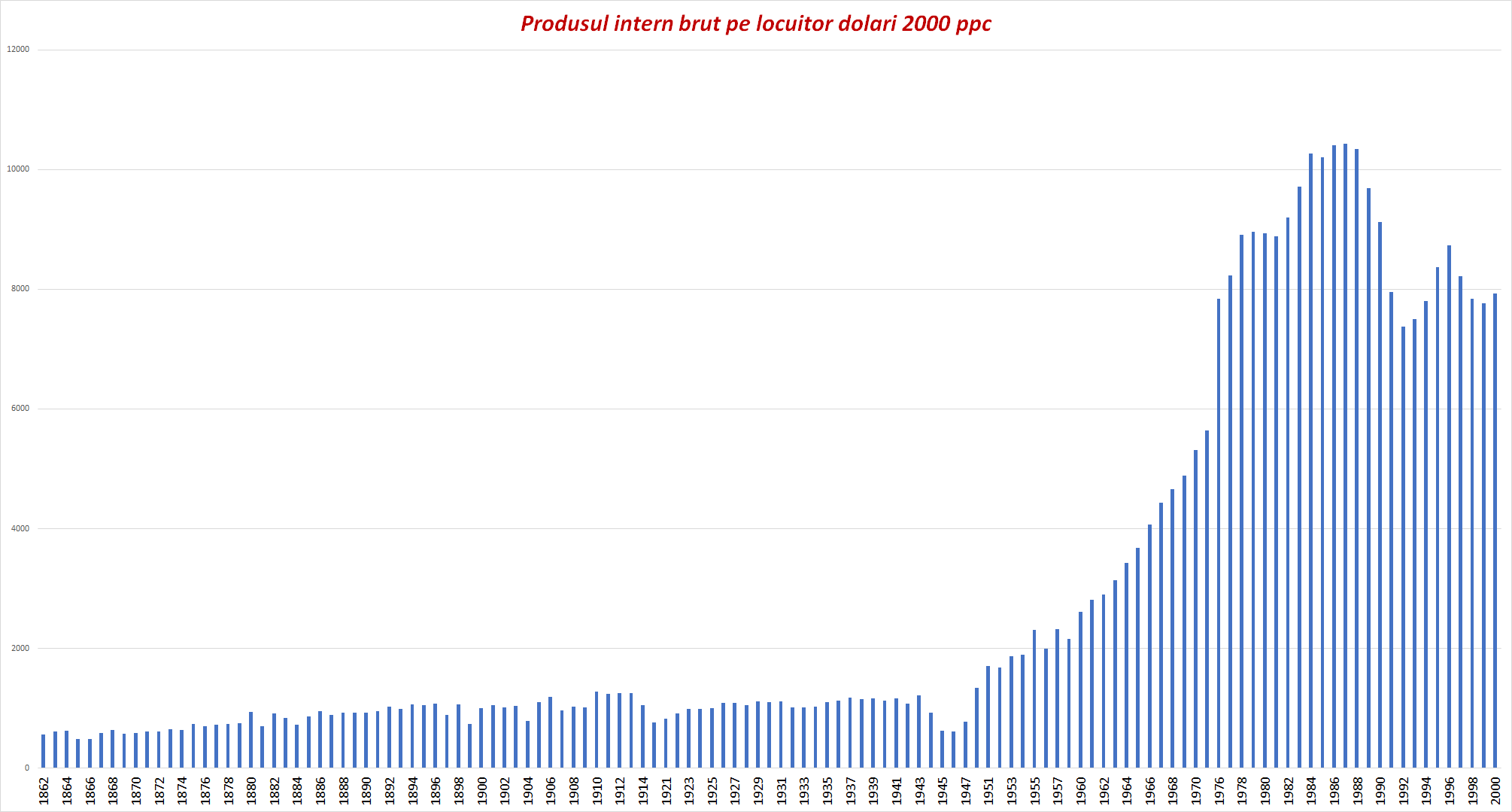
The data confirm: the period from the reign of Al.I. Cusa until 1914 was the country where Romania had the strongest development and the highest economic growth. For many years (1867, 1875, 1880, 1882, or 1885), we had economic growth of 20%-38%, and the amount of goods and services increased by 53% for each decade from 1862-1914.
With all his reforms, Cuza would not be considered a good Romanian today. “Today, the “patriotic” party and its voters would not consider Alexandra Ioana Cuza a good Romanian. As the first piece of evidence, the “revelation” that his mother, Soltana, was from the Greco-Italian Phanariot family of Cozadini, would be thrown in his face.
Then he would be accused of being a hater of BOR, even an anti-Christian. why Because, despite the fervent protests of the Metropolitanate of Moldova, he took the lands belonging to Orthodox monasteries, many mined in partnership with the Greeks from Mount Athos, which was a quarter of the agricultural and forest area of the United Principalities, and transferred them to the state, selling them later a large part to the peasants, in installments for 30 years. He also introduced a 10% tax on the income of churches and monasteries.
And sold to “Brussels”. All of Kuza’s reforms are nothing more than joining the “EU”, the West. This would not be surprising, since we know that he completed his education, including high school, in Paris, was captured by “agents” and sent to the Principality to destroy the traditions and rites of his ancestors,” writes Christian Tudor Popescu.
During the union in 1859, there were no railways in Romania, the roads were dirt (with the exception of very few paved ones)
The figures below are selected from the work of academician Viktor Aksenyuk – “Gross domestic product of Romania – age series of data”.
For a brief overview, at the time of the Union in 1859, the country had no railroads, the roads were dirt (except for a very few paved ones). Ports on the Danube and the Black Sea consist of scaffolding for the parking of sailing ships; there were no warehouses or silos for grain storage in the country; the telegraph network connected only a few cities on the way from Austria-Hungary to Istanbul; there were practically no buildings for primary schools and none for housing universities, Viktor Aksenyuk notes.

As A. I. Kuza said in 1859, “everything had to be done”, and in 50 years (1862-1914) the largest infrastructure investments were made in the entire modern history of the country; the interwar period pales in comparison.
If we took only railways and construction works – bridges, tunnels, stations, workshops, etc. – between 1869 and 1914 over 3,500 km were built, while in the 20 years between the wars, in addition to the existing network in 1920, less than 1,000 km of additions were built.

During 1860-1914, more than 29,000 km of roads were built, of which 5,000 km are national roads serviced by hundreds of cantoniers; concrete and metal bridges were built, some of them still protect several roads today; all the ports on the Danube and the port of Constanta were built and equipped with machinery.
Docks, modern warehouses, silos, garage lines were built; buildings for numerous institutions, from primary schools to higher education institutions or cultural institutions. Post and telegraph connected all the settlements of the country; telephones were introduced in large cities; large buildings were built for the army – barracks, forts, etc.
Water supply and sewage works, electrification of large cities, construction of street networks in cities, etc. were established.
It should also be noted the value of roads made by one of the most famous Romanian civil engineers, Eli Radu; in his article published in the “Bulletin of the Polytechnic Society” for February 1913, he shows that 1 km of asphalted road, especially in hard-to-reach places, can cost more than 40,000 lei, corresponding to 13.3 kg of gold (about 4 million lei for today’s gold rate). Eli Radu estimated the recovery of roads, restoration and modernization to the standards of that period at 52,500 million lei, which is equivalent to 17.5 thousand tons of gold, over 45 years (more than a billion euros in today’s terms)
Researchers at the time showed that the Cernavoda bridge was worth 35 million lei in gold or 11.7 tons of gold, the port of Konstanz was worth 70 million lei, corresponding to 23.3 tons of gold, and the silos, docks and quays of the ports of Galaţi and Breila were worth 30 million lei, which equivalent to 10 tons of gold.
In the field of telegraphy, 9,062 km of lines and 25,308 km of wires on poles have been installed; in telephone communication, the length of long-distance lines in cities was 38,982 km; the length of city wires was 39,606 km, intercity – 51,899 km, private networks – 17,260 km. 1,008 manual switches, 3,304 booths worked in the country, and the number of subscribers was 17,979 with a city population of 1,460 thousand inhabitants.

Romania’s economic efforts resulted in a constant increase in production, in contrast to the period of the next three decades, 1915-1945, marked by wars and economic crises. In the period 1859-1914, the added value increased almost 4 times, and GDP per capita – 2.17 times.
In the interwar decades, associated with five to six years of post-war recovery and an economic crisis, especially an agrarian one – 1929-1936 – the average increase per capita was 29%, and in 1935-1939 – 96% of the pre-war , which is explained mainly by the decline of agriculture. After the exhaustion of national enthusiasm caused by the unification of the country in 1918 and the end of the devastating war, the rulers faced a dilemma: what would be the engine of growth after the disappearance of large agricultural holdings?
Different solutions were proposed and discussed, based on available resources: progress through the development of peasant production, especially since 80% of the population lived in rural areas. The idea turned out to be unviable; small-scale production in itself does not have the power of development; nowhere in the world did he succeed. The second path, industrialization, was tempting and compelling. And so the story began…
A brief history of events
Electoral assembly elections were held in Wallachia between 8/20 and 12/12/24 January 1859.
Conservative MPs won 46 of the 72 existing mandates. The session of the Electoral Assembly opened on January 22/February 3, 1859 in a fiery atmosphere. The headquarters of the people’s representative was surrounded by thousands of people. On the night of January 23 to 24, members of the National Party met at the Concordia Hotel in Bucharest, where both the deputies of the conservative majority and the deputies of the National Party sought a solution. Finally, on the proposal of Dimitrii Grika Ghika, the decision of double elections was adopted, which represents the best way to overcome the impasse.
The work of the Assembly resumed on the morning of January 24/February 5, 1859 at 11:00 a.m. On behalf of the National Party, lawyer Vasile Boerescu demanded a secret meeting, during which he advocated the principle of the Union and, emphasizing the legality of the act, in accordance with the “spirit of the Convention”, proposed the election of Alexander Ioan Cuza as the ruler of the Romanian land. Returning to the meeting hall, 64 deputies voted to appoint Alexander Ioan Kuza as the ruler of Wallachia. In this way, the actual union of the two principalities was achieved. Thanks to this political act of double elections, without formally violating the provisions of the Paris Convention, the Romanian nation won an important victory in the realization of the modern Romanian state. Alexandru Ioan Cuza arrived in Bucharest on February 8/20, 1859, where he was received with great enthusiasm, notes the work “Istoria României în date” (Editura Enciclopedică, 2003).
During the Paris Conference (March 26 / April 7 – August 25 / September 6, 1859) representatives of the guarantor states (France, Russia, Great Britain, Prussia and the Kingdom of Sardinia) were recognized de jure 1/1. On April 13, 1859, the election of Alexander Ioan Kuza as the ruler of the United Principalities. Austria and the Ottoman Empire recognized this event on August 25/September 6, 1859. Austria de facto recognized on May 2/14, 1859, the double election of Alexander Ioan Cuza through a written note, and on this occasion ties with the two Romanian governments, with Iasi and from Bucharest. The recognition of the dual elections by the guarantor states and the Ottoman Empire consecrated the personal union of the two principalities, the first stage towards the full realization of the union.
On November 22/December 4, 1861, the Porte issued the “Order on the Administrative System of Moldavia and Wallachia”, which recognized the administrative-political union of the principalities, which provided for a number of important measures, including: the reunification of the ministries from Iasi and Bucharest in one government and elected assembly in one; suspension of the activities of the Central Commission for Fokshan; the establishment of a provincial council in each principality, which was to be consulted on all laws and regulations of local importance, according to the source mentioned above.
The first unitary government of Romania, led by Barbu Catargiu, was formed on January 22/February 3, 1862. After that, the first Romanian parliament was opened in Bucharest on January 24/February 5, 1862. The ruler of Alexandrou, Ioan Cuza, solemnly proclaimed before the electoral assembly of Moldova and Wallachia, which met in joint session, the “Final Union of the Principalities”, and the city of Bucharest was declared the capital of the new state, according to the work “History of Romania in Data” (Encyclopedic Publishing House, 2003).
- See here in PDF format the table regarding A series of data on GDP and GDP per capita.
- See here in PDF format the table regarding a number of population data.
Sources used: Victor Aksenyuk – Domestic Product of Romania (Volumes I and II), Population of Romania 1860-2020 – A series of historical data,
Source: Hot News
Ashley Bailey is a talented author and journalist known for her writing on trending topics. Currently working at 247 news reel, she brings readers fresh perspectives on current issues. With her well-researched and thought-provoking articles, she captures the zeitgeist and stays ahead of the latest trends. Ashley’s writing is a must-read for anyone interested in staying up-to-date with the latest developments.